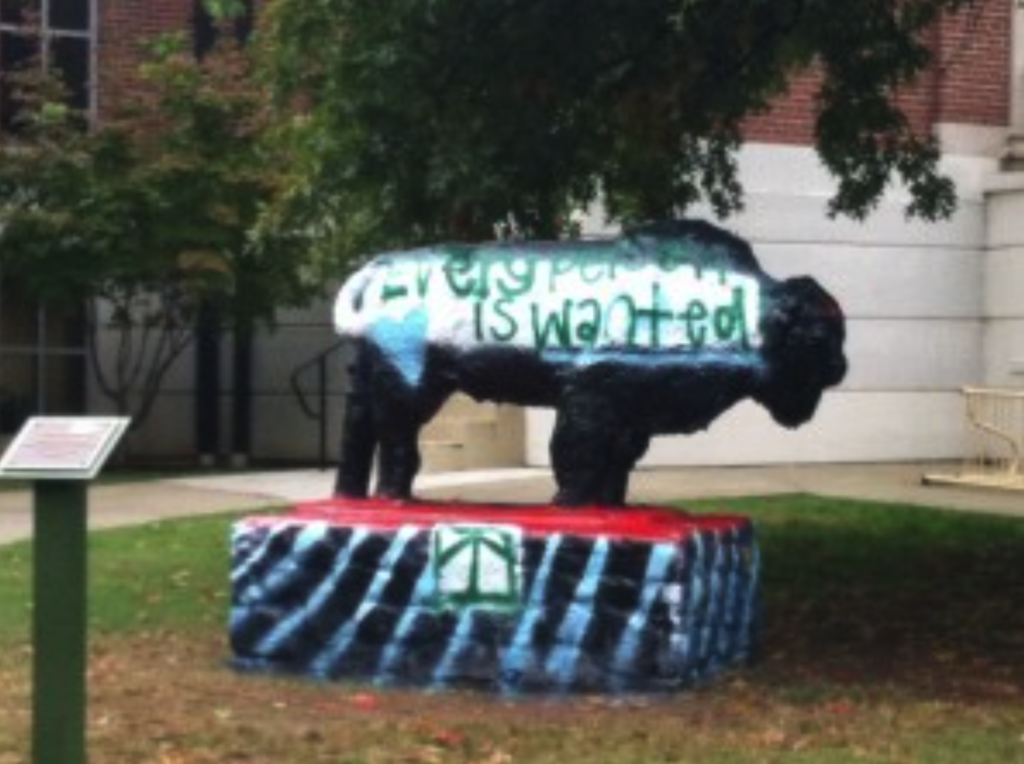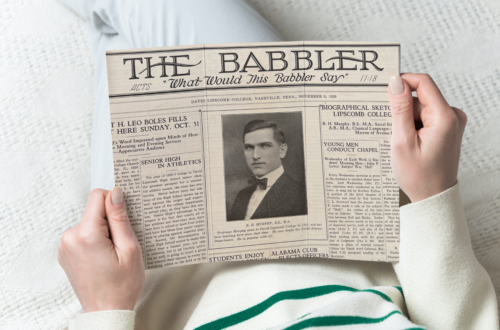
Bison statue stands as representation of student expression
Republished from Lumination Network, Oct. 23, 2012.
It was a bison painted differently than most students had ever seen.
Decked out in full-on rainbow colors with an equal symbol on the base, the Lipscomb bison statue became a four-legged, thick-maned symbol of equality.
Desiring to show their support for “National Coming Out Day” on Oct. 11, Lipscomb students Jeremiah DeVore and Seth Lykins transformed the bison into an image of colorful celebration and support.
The bison usually is awash in different colors and phrases to promote school events, so the rainbow-fashioned political statement had many students asking questions and expressing support.
“We did it to show support for members of the Lipscomb community who may feel uncomfortable with showing that part of themselves,” said DeVore, by way of simple explanation.
While he knew the paint job had the potential to cause controversy, he said in no way did he intend the message to be anything but positive, and he “did not intend any disrespect for the university.”
Seth Lykins was quick to jump on board with DeVore’s idea of painting the bison.
“We wanted to use the symbol of Lipscomb to celebrate the day. It was merely our way of expressing positivity and support for everyone,” he said.
Lykins said that he heard of only positive reactions and “the Facebook picture got a lot of likes,” he said.
Students in general seemed to agree with the sentiment.
“The bison is a forum for students to express themselves,” said sophomore Neely Baugh. “As long as what is painted doesn’t degrade others, the school should allow students to express their messages.”
Like all Lipscomb bison paintings, eventually this one was covered over. But in this case, it again was a message of harmony.
The new paint was a simple black and white background, but it held these words painted in green: “Every person is wanted.”

The Lipscomb administration said the bison is a forum for student expression and, as long as its messages are appropriate, remains uncensored.
“The bison statue is a campus icon, which students use to make statements about campus events and things going on in the world around them,” said Scott McDowell, vice president for student development, in a statement. “We are a campus that, at times, has open discussions about difficult issues. The bison is not a place for the statement of university policy or practice but rather, a place for student expression. It is our intent that, as long as the messaging remains respectful and is not vulgar or obscene, the bison remain a place for student expression.
“That being said, we want students to always feel the freedom to come to the administration to engage in dialogue about anything for which they feel a burden,” he continued. “We never want the bison or other similar forum to become a substitute for face-to-face conversation.”
By Hailey Bryant





